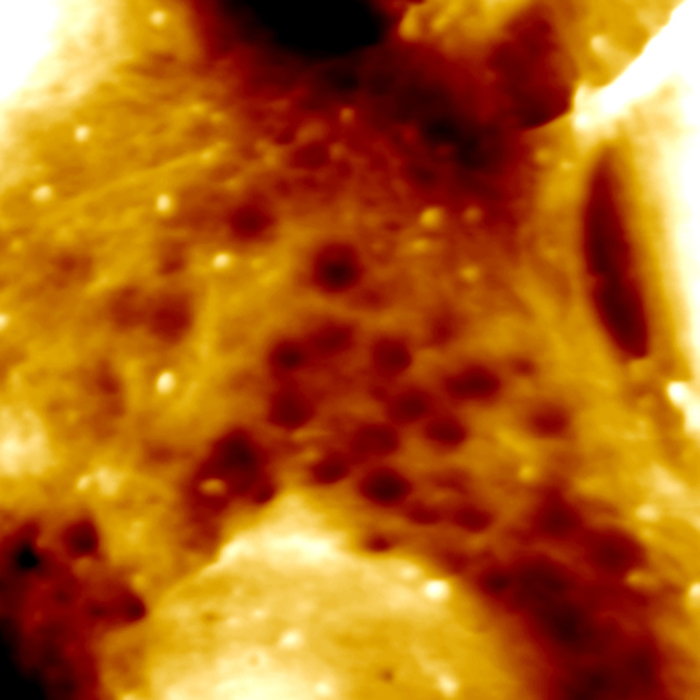
RM
Endothelial cytoskeleton, coloured AFM
Endothelial cytoskeleton. Coloured atomic force micrograph (AFM) showing the cytoskeletons of chemically fixed endothelial cells. The cytoskeleton is made up of three types of proteins; actin filaments, microtubules and intermediate filaments. The cytoskeleton maintains the cell's shape, allows some cellular mobility and is involved in intracellular transport. Endothelial cells are flat and line all of the body's blood vessels. An atomic force microscope is used to study surfaces at an atomic level. An extremely fine spring-mounted probe is moved across the surface at a constant height. Any deflections are recorded and converted into a computer map of the surface. Magnification: x4000 when printed at 10 centimetres wide.

More
Top Categories
